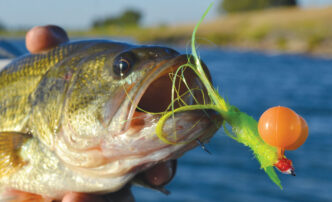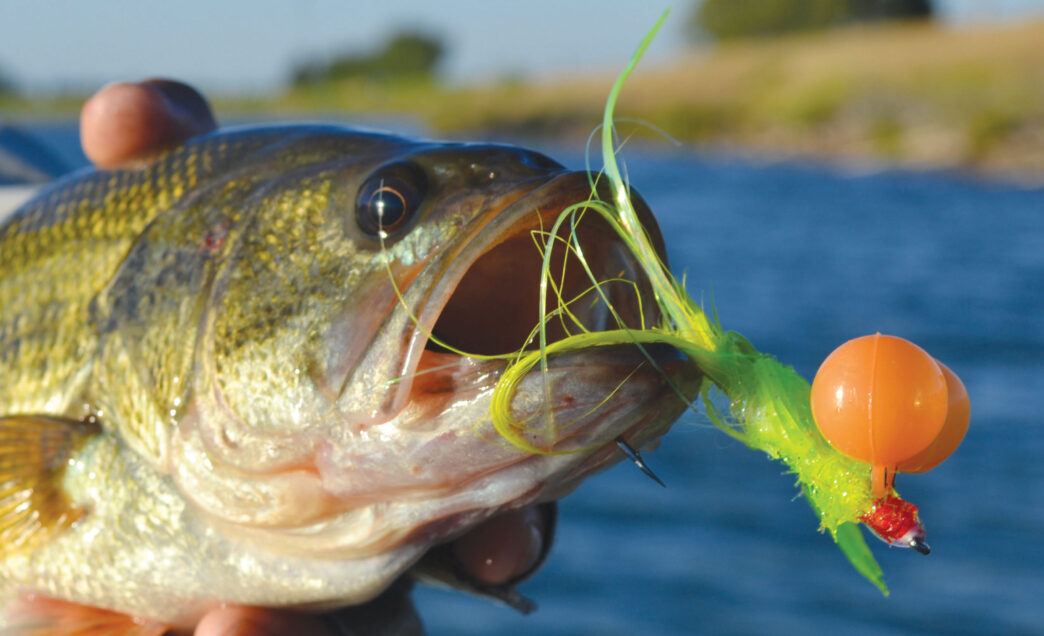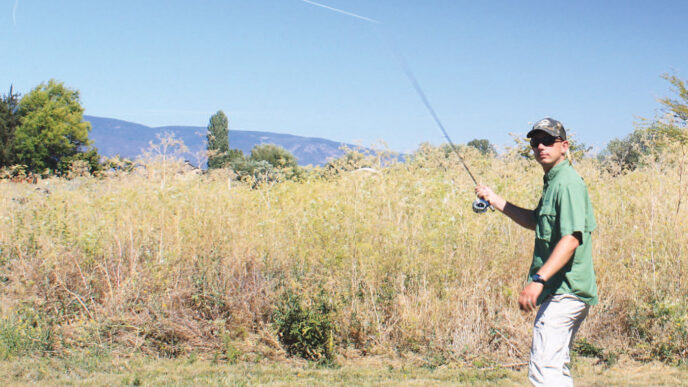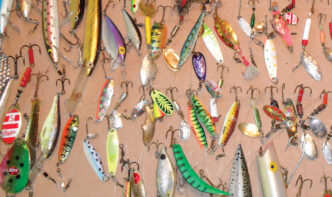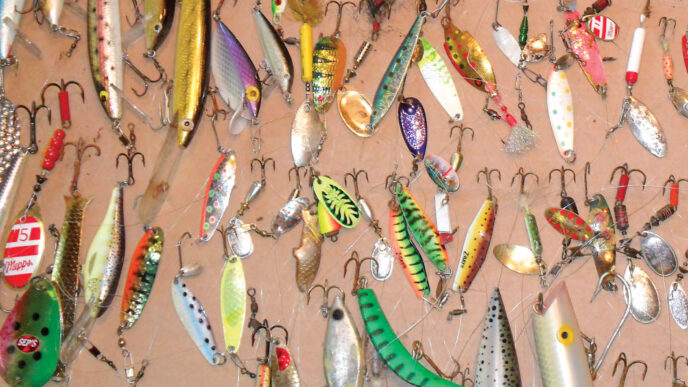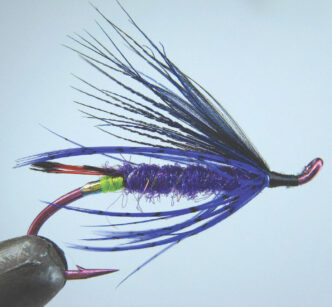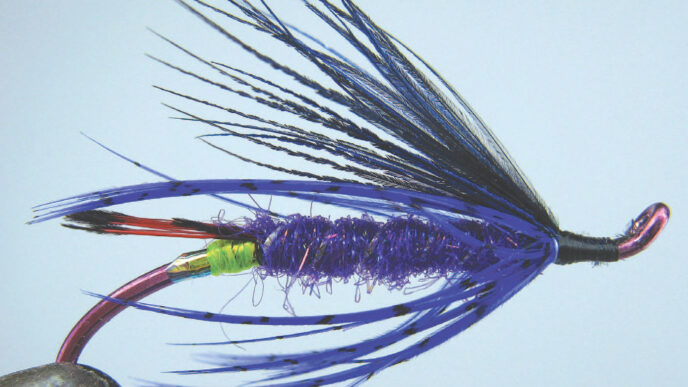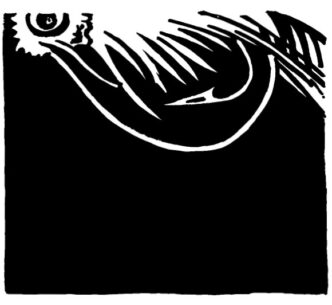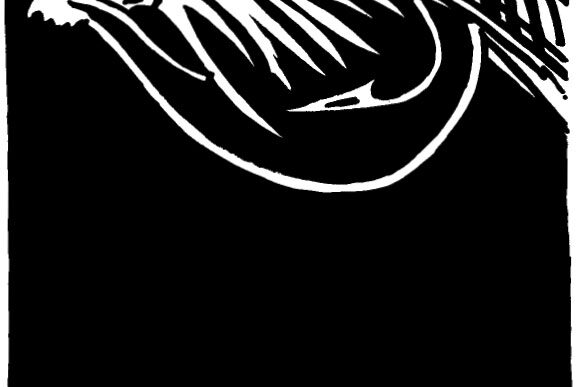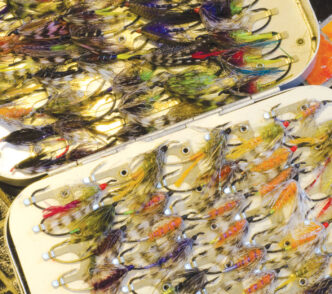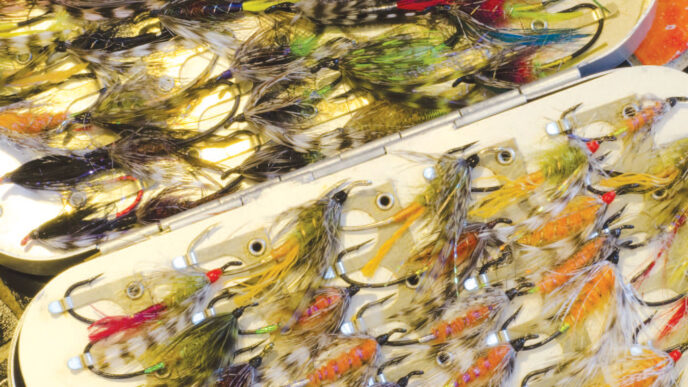California is known around the world as a place of great creativity and a high tolerance for weirdness. Have you ever wondered if that was also true of the state’s fly tyers? In the May/June and July/August issues of California Fly Fisher, readers were encouraged to submit innovative patterns for our Out of the Box fly-tying contest. In response, I received a number of boxes and padded envelopes full of flies from some of the state’s most creative fly tyers. To recap, the contest had just four rules. The fly must:
- Be able to be cast with fly tackle
- Not require scent or bait to attract fish
- Have a proven ability to catch fish
- Not incorporate any hazardous or infectious materials.
A total of 22 flies were submitted. Not surprisingly, most were trout patterns, though there were a few bass flies in the mix. For some reason, the steelhead and saltwater folks chose not to participate. I guess this is not too surprising. Steelheaders spend enormous amounts of time chasing a very limited number of fish, and anyone who develops a successful pattern is likely to keep quiet about it. As for saltwater, I wonder if the dearth of entries is simply a reflection of the limited number of folks who fish the Pacific.
The submitted patterns ranged from dust-bunny specks perched daintily on size 20 hooks to psychedelic concoctions lashed onto hooks that could easily double as small gaffs. Not surprisingly, all of the flies were well-tied, and most were obviously the result of many hours spent solving specific fishing problems. Unfortunately, I had to select only those that demonstrated real novelty in design or materials. With the aid of a couple of bottles of homebrew, I narrowed the field to four flies.
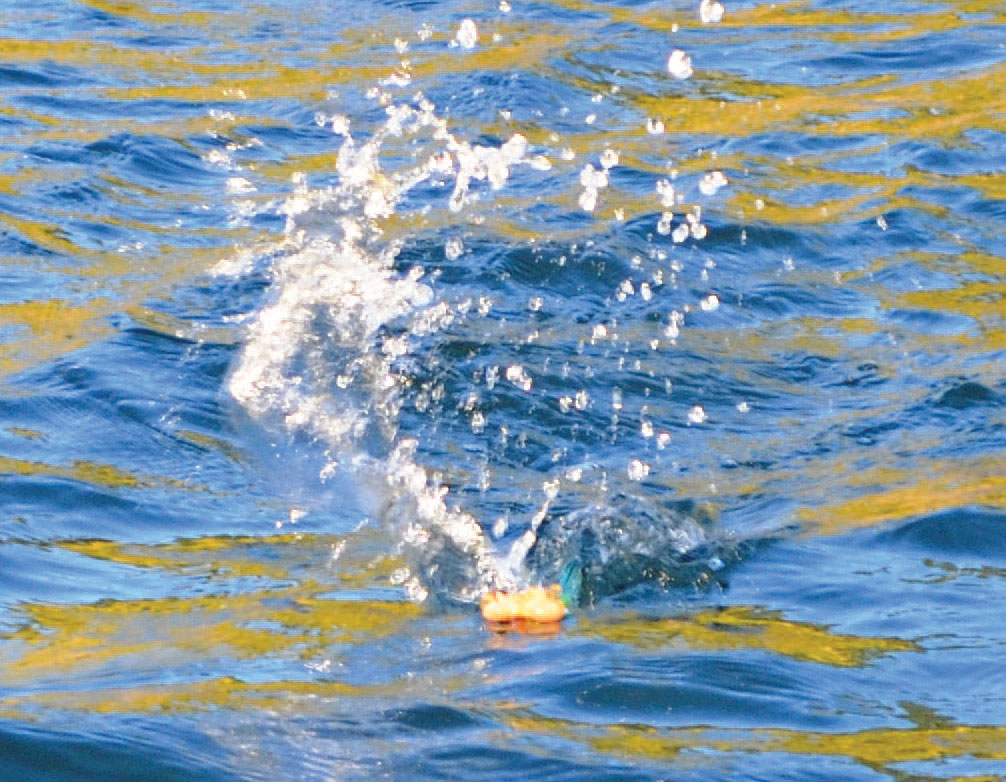
The BS Popper
I have to admit, I was especially taken by the popper submitted by Mar Caballero. The bizarre shape of this fly is certainly an attention grabber. I have seen some odd flies in my time, but this one was way, way out there. And the fly’s physical appearance isn’t the only thing that screamed for attention. The double-bubble bright orange head and almost toxically green chartreuse body suggested that Mar had no qualms about ignoring the artist’s color wheel. Mar’s description of how this fly came about demonstrated that looks aside, it was intelligently engineered. The principal design element is a pair of glued-together Thingamabobber indicators. Mar had noticed how much disturbance these indicators make when they are pulled from the water for recasting. He figured he could take advantage of this disturbance to make a top-water bass fly that pushes a lot of water. One could argue the bubble-eyed goldfish appearance of this fly was just an unintended consequence of Mar’s creative design process. One could, but I don’t. I suspect Mar has a seriously mischievous streak.
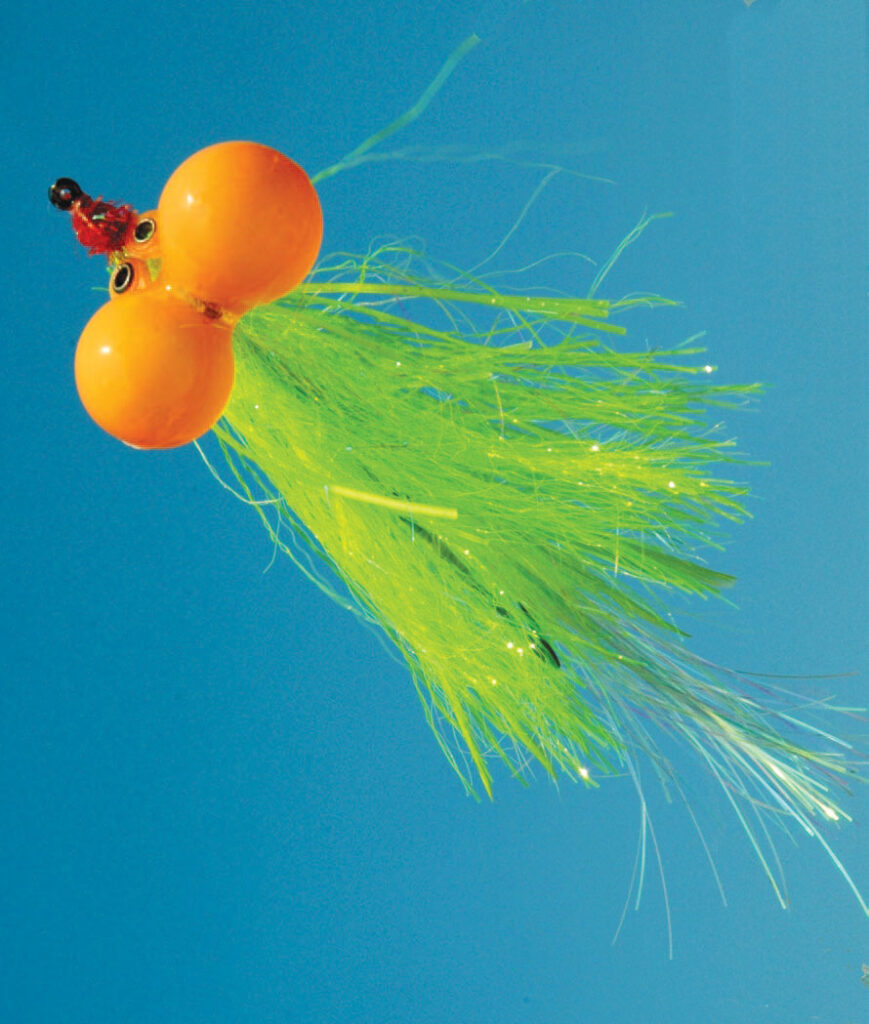
Main hook: 5/0 Owner 5100-151 worm hook (The hook is cut off at its bend at the end of the tying process.)
Trailer hook: 2/0 Gamakatsu Octopus hook
Tail: Chartreuse Flashabou, bucktail, and hen hackle
Body: Chartreuse Baitfish Emulator
Legs: Chartreuse Silli Legs
Thorax: Chartreuse Estaz and red chenille
Head: Two Thingamabobbers glued together with epoxy and tied to the hook with 25-pound Maxima
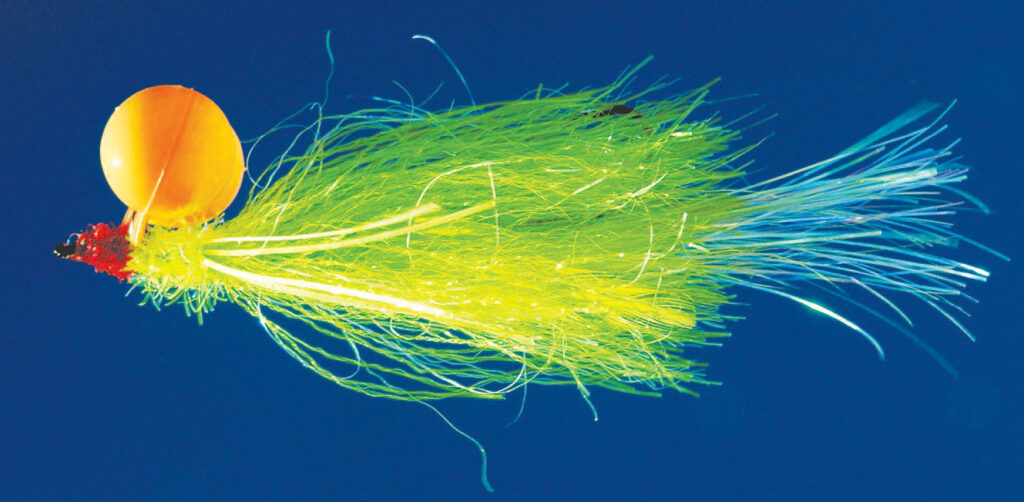
Twin Midge
Yash Iseda was clearly tapping into some creative neurons when he designed his Twin Midge fly. That the original idea was the result of watching dogs engage in coitus only goes to prove that creativity often has the strangest parents. While I love fishing for trout with midge pupa patterns, I find their often minuscule size a real problem for my eyes and fingers. By putting two midges on one hook, Yash has kept the critical proportions of the naturals while making the fly a bit more user-friendly. According to Yash, the pattern quickly established itself as the hot pattern on a Sierra trip and has been used by other members of his fishing club on many river and lake fishing trips. I like the pattern so much that I have added a few Twin Midges to my own fly box.
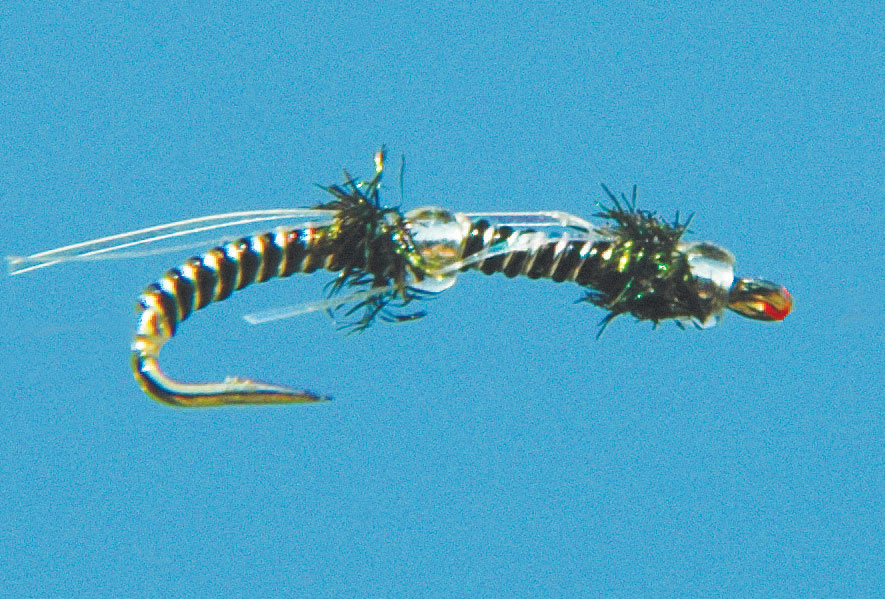
Hook: Tiemco 200R
Bead: Glass, 1.5 millimeters in diameter, quicksilver or mercury color
Thread: Uni Trico 17/0
Thorax: Peacock herl
Body: Small black and silver Ultra Wire
Wing: Small opaque Mirage Tinsel, pearl Krystal Flash, or similar material
Finish: Sally Hansen’s Hard as Nails
Pipe Insulation Leaf Hopper
Jon Warner found himself with a high-altitude angling problem. He was fishing, but not exactly catching, while working his flies over a Sierra lake. Fortunately, he managed to catch a few trout using an attractor pattern. The fish underwent a quick necropsy prior to a one-way trip into hot fat. Picking through the stomach contents, Jon found that they had been gorging on treehoppers. These tent-shaped terrestrials had obviously been blown onto the lake by gusty Sierra upslope winds. Jon realized he needed to make a treehopper pattern if he was going to change his hookup rate. After experimenting with a variety of materials, he turned to one of the critical elements of successful life at freezing altitudes — foam pipe insulation. With the aid of sharp scissors, a dab of epoxy, and a small selection of waterproof pens, Jon produced a lightweight pattern that closely mimics the natural. The closed-cell foam of the pipe insulation ensures that the fly floats very well. Jon tied the pattern on, and his catch rate took off.
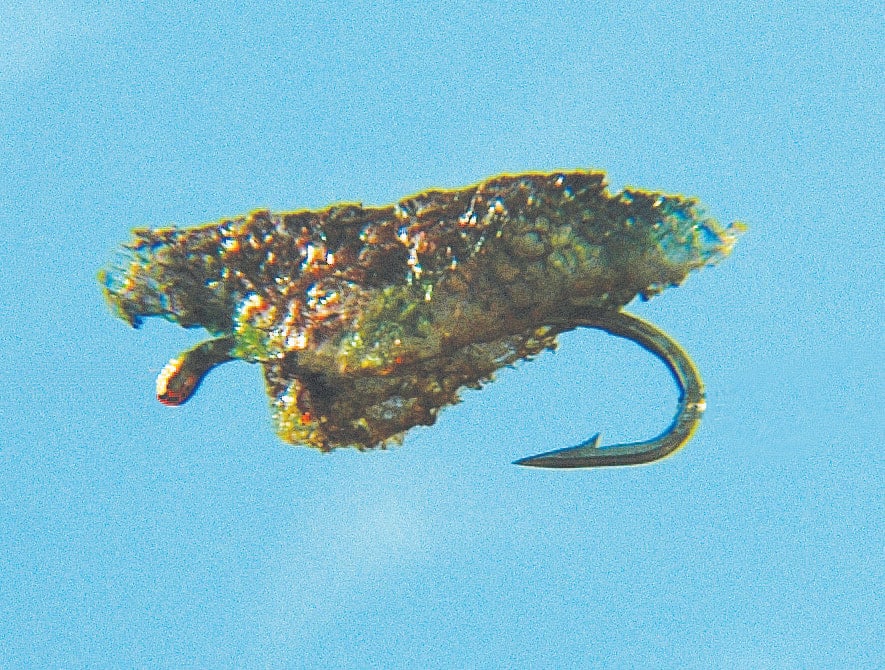
Hook: Size 12 dry fly
Body: Gray foam pipe insulation, cut to shape, with a slit in the belly for gluing onto the hook
Color: Waterproof marker pen — brown or green on top and tan on belly
Stretch Magic Worm
There can’t be many fly fishers in the United States who don’t immediately recognize the San Juan Worm. This pattern was originally tied to match aquatic worms found in the San Juan River. It did not take long for the fly to find its way to other waters. These days, it is tied to mimic everything from delicate chironomid larvae to chunky night crawlers. Anyone who fishes San Juan Worms and other flies tied with chenille knows the material can be a bit delicate. Fish teeth eventually shred the fly, and the use of forceps is frequently fatal. Jack Brothers discovered that Stretch Magic bead and jewelry cord sold at a local hobby shop makes an ideal substitute material. By replacing the chenille with Stretch Magic, Jack produced a great-looking fly that in all likelihood could probably last an entire season permanently attached to the tippet. I don’t mean to sound like a latter-day Luddite, but is this really a good thing? This disruptive innovation could put hundreds of commercial tyers out of work.
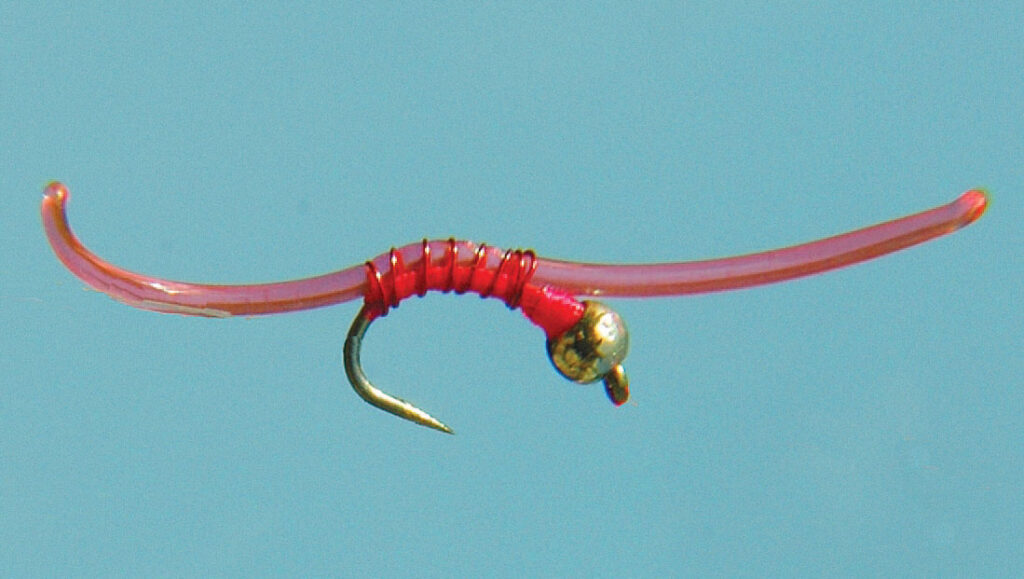
Hook: TMC 2457, size 14
Thread: Fluorescent pink Ultra, 70 denier
Bead: Gold tungsten, 2.7 millimeter
Body: Fluorescent red 1.2 millimeter Stretch Magic, heated and stretched



